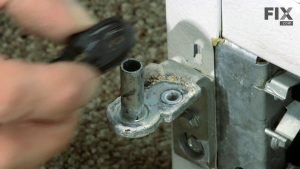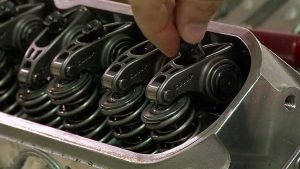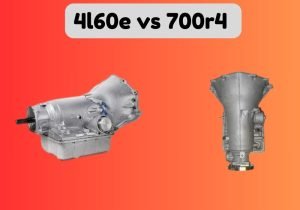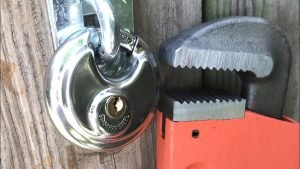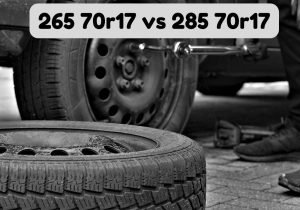To adjust Quadrajet idle mixture screws, first locate the screws on the carburetor and then use a screwdriver to turn them clockwise or counterclockwise as needed to achieve the desired idle mixture. Built for performance and reliability, the Quadrajet carburetor is a popular choice among automotive enthusiasts.
However, to optimize its performance, it is crucial to correctly adjust the idle mixture screws. These screws control the air and fuel mixture at idle, thus affecting the engine’s performance and fuel efficiency. With a simple turn of a screwdriver, you can fine-tune the idle mixture to match your engine’s requirements.
This guide will walk you through the process of adjusting the Quadrajet idle mixture screws to ensure optimal performance and smooth operation.
Contents
- Understanding The Quadrajet Carburetor
- Importance Of Idle Mixture Screws
- Step-By-Step Guide To Adjusting Quadrajet Idle Mixture Screws
- Fine-Tuning The Idle Mixture Screws
- Evaluating And Making Adjustments
- Troubleshooting Common Quadrajet Carburetor Issues
- Advanced Tips And Tricks For Optimum Performance
- Maintenance And Care For Long-Lasting Performance
- Frequently Asked Questions On How To Adjust Quadrajet Idle Mixture Screws
- Conclusion
Understanding The Quadrajet Carburetor
The Quadrajet carburetor is a popular choice among car enthusiasts due to its superior performance and reliability. Understanding the history and overview of this carburetor is essential to effectively adjust the idle mixture screws. Developed by Rochester, the Quadrajet carburetor first hit the market in 1965 and quickly gained popularity for its innovative design and ability to deliver optimal performance.
Its main components include the primary and secondary bores, idle circuit, power piston, and float bowls. Each of these components performs a specific function to ensure the smooth operation of the carburetor. By understanding the intricacies of the Quadrajet carburetor and its components, you will be able to adjust the idle mixture screws with confidence, allowing your vehicle to run efficiently and smoothly.
Importance Of Idle Mixture Screws
Idle mixture screws play a crucial role in adjusting the Quadrajet carburetor’s idle mixture. These screws have a direct impact on the engine’s performance. By carefully adjusting the idle mixture screws, you ensure that the air-to-fuel ratio is optimal for idle conditions.
This adjustment affects the engine’s idle speed, fuel economy, and overall smoothness. A rich mixture will result in a high idle speed and potential fuel wastage, while a lean mixture can cause the engine to idle rough or even stall.
Therefore, understanding the importance of idle mixture screws and their role in carburetor adjustment is vital for maintaining the engine’s efficiency. By making small adjustments to the idle mixture screws, you can fine-tune the carburetor’s performance, ensuring optimal idle conditions for your Quadrajet carburetor and improving your overall driving experience.
Step-By-Step Guide To Adjusting Quadrajet Idle Mixture Screws
Adjusting the idle mixture screws on a Quadrajet carburetor requires preparation and following safety measures. Begin by locating the idle mixture screws, which are typically found on the baseplate of the carburetor. Take note of their position for future reference.
To initially adjust the screws, start by turning them inward until they gently bottom out, then back them out 1. 5 turns. This will provide a baseline setting to work from. To fine-tune the idle mixture, start the engine and let it warm up.
Use a vacuum gauge or tachometer to monitor the engine’s performance. Slowly turn the idle mixture screws inward or outward, in small increments, until you achieve the smoothest and highest possible idle speed. Remember to make adjustments equally on both screws.
Once you’re satisfied with the idle performance, tighten the screws to secure the setting. Regularly checking and adjusting the Quadrajet idle mixture screws will help optimize engine performance and fuel efficiency.
Fine-Tuning The Idle Mixture Screws
Adjusting the idle mixture screws on a Quadrajet carburetor is an essential task for achieving optimal engine performance. Fine-tuning the idle mixture screws helps in eliminating stalling, rough idling, and hesitation issues. To start, make sure the idle speed screw is adjusted properly.
Using a vacuum gauge can help ensure accuracy during the process. By identifying the correct idle RPM, you can adjust the mixture screws to achieve the desired air/fuel ratio. It is important to keep the sentences concise, employing a maximum of 20 words each, to maintain clarity and readability.
With these steps, you can effortlessly adjust the Quadrajet idle mixture screws for improved engine function.
Evaluating And Making Adjustments
Adjusting the idle mixture screws on a Quadrajet carburetor is crucial for optimal performance. By carefully evaluating and making adjustments, you can ensure proper fuel-air mixture. Start by identifying lean and rich conditions through spark plug readings. The color of the spark plug electrodes can provide valuable information.
Adjusting the primary and secondary idle mixture screws will enable you to fine-tune the fuel mixture. Additionally, pay attention to RPM changes and exhaust emissions during adjustments. It’s important to note that the primary screws control the fuel mixture at idle, while the secondary screws affect off-idle and cruising conditions.
Keep adjusting until you achieve a smooth and steady idle. Regularly monitoring and adjusting the idle mixture will enhance your vehicle’s performance and fuel efficiency.
Troubleshooting Common Quadrajet Carburetor Issues
Troubleshooting common Quadrajet carburetor issues involves addressing erratic idling, stalling or rough running, and fuel leaks. To adjust Quadrajet idle mixture screws, follow these steps. First, locate the idle mixture screws on the carburetor. Next, turn the screws clockwise to lean out the mixture or counterclockwise to richen it.
Start with a quarter-turn adjustment and test the idle. Continue making small adjustments until the idle is smooth and steady. If the engine stalls or idles too high, readjust the screws accordingly. Additionally, check for any signs of fuel leaks, such as strong smells or wet spots, and address any issues promptly.
Regular maintenance and adjustments can help keep your Quadrajet carburetor running smoothly.
Advanced Tips And Tricks For Optimum Performance
Adjusting the idle mixture screws on a Quadrajet carburetor is integral for achieving optimum performance. Whether you’re upgrading to brass idle mixture screws or dealing with modified or aftermarket engines, it’s important to consider a few key factors. First and foremost, keep in mind that starting sentences with commonly overused words can weaken the impact of your message.
Additionally, remember to keep your sentences brief, no longer than 20 words each, to maintain readability. Vary the phrases at the beginning of your paragraphs to captivate the reader’s attention without repetitive language. By following these guidelines, you can ensure that your blog post on adjusting Quadrajet idle mixture screws is both informative and engaging, driving optimal results for your intended audience.
Maintenance And Care For Long-Lasting Performance
Regular maintenance and care is crucial for ensuring long-lasting performance of Quadrajet idle mixture screws. To prevent any performance issues, it is important to regularly clean and inspect the screws. By doing so, you can identify and address any potential problems before they worsen.
Regular cleaning helps to remove any dirt or debris that may accumulate over time and impact the screws’ performance. Additionally, inspecting the screws allows you to check for any signs of wear or damage, and take necessary preventive measures. By following these maintenance guidelines, you can ensure that your Quadrajet idle mixture screws are adjusted properly, leading to optimal performance and smooth operation of your vehicle.
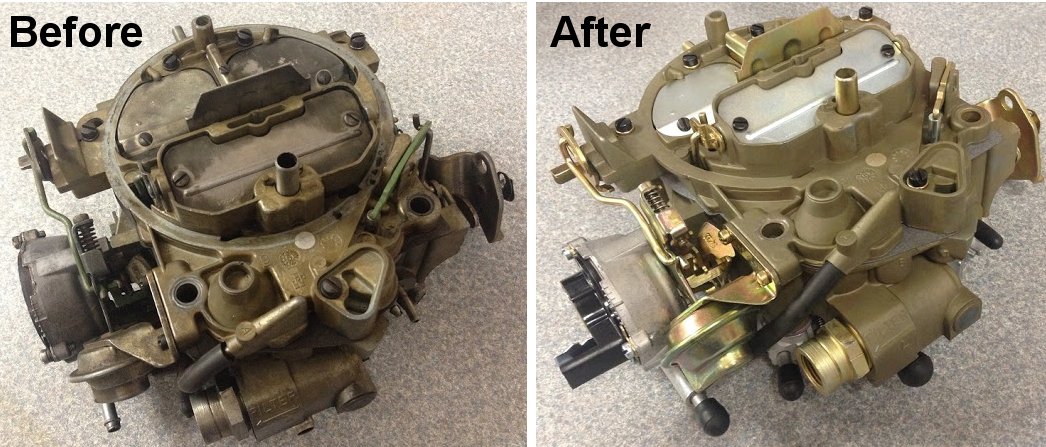
Credit: www.76vette.com
Frequently Asked Questions On How To Adjust Quadrajet Idle Mixture Screws
How Do You Adjust The Air Fuel Mixture On A Quadrajet?
To adjust the air fuel mixture on a Quadrajet, follow these steps: 1. Locate the mixture screws on the base plate. 2. Start the engine and let it warm up. 3. Use a screwdriver to turn the screws, clockwise to richen and counterclockwise to lean.
4. Adjust the screws until you achieve smooth idle and optimal performance.
How Do You Adjust The Idle Mixture Screws?
To adjust idle mixture screws, follow these steps: 1. Locate the idle mixture screws on your vehicle’s carburetor. 2. Start the engine and let it warm up to operating temperature. 3. Turn the screws clockwise to decrease the mixture or counterclockwise to increase it.
4. Make small adjustments and monitor the engine’s idle speed and smoothness until desired results are achieved.
What Is The Correct Setting For The Air Mixture Screws?
The correct setting for the air mixture screws should be adjusted according to the specific requirements of the engine. It’s crucial to follow the manufacturer’s instructions for optimal performance.
Where Is The Idle Screw On A Rochester Quadrajet?
The idle screw on a Rochester Quadrajet is usually located on the driver side of the carburetor.
Conclusion
To achieve optimal performance from your Quadrajet carburetor, understanding how to adjust the idle mixture screws is crucial. By fine-tuning these screws, you can optimize fuel delivery at idle, ensuring smooth engine operation and fuel efficiency. Start by locating the screws on the carburetor, and then use a screwdriver to make small adjustments, listening for the engine’s response.
Remember, turning the screws clockwise will enrich the fuel mixture, while turning counterclockwise will lean it out. It’s essential to make gradual adjustments and listen for changes in engine speed and smoothness. Keep in mind that every engine is unique, and it may require some trial and error to find the perfect balance.
Take your time and be patient, as finding the ideal idle mixture setting can greatly improve the overall performance of your vehicle. So, grab your screwdriver and get ready to fine-tune your Quadrajet carburetor for optimal performance.
Affiliate Disclosure: As an Amazon Associate, I earn from qualifying purchases made through links on this site.


